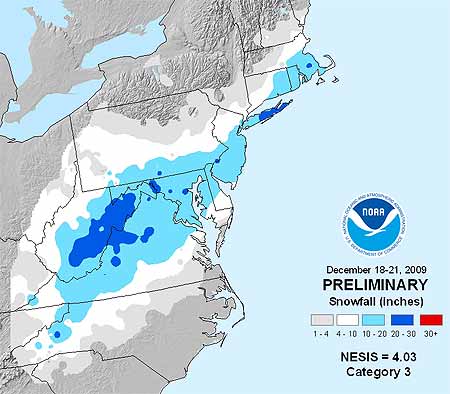This evening at 8-10 p.m. is the First Annual Reception for
CoRioLiS: LGBTQs & Friends in the American Meteorological Society.
Enjoy refreshments and hear from guest speaker Guy Walton, TWC forecaster, on “Acceptance and Innovation at The Weather Channel.” (By the way, after you hear Walton’s talk at the reception, consider catching his temperature extremes study Tuesday at 11 a.m.).
The reception, in the Juniper Room M2-North Tower of the Omni Hotel, in sponsored by the AMS Board on Women & Minorities, the UCAR Community Building Program, and the National Organization of Gay and Lesbian Scientists and Technical Professionals (NOGLSTP). For more information, contact Zhenya Gallon at ext. 8607, [email protected],
or see CoRioliS on Facebook.
Get Hands-On at WeatherFest
Ready for some fun and games? Come to the kickoff of WeatherFest, a huge interactive science fair for weather enthusiasts of all ages. From noon to four on Sunday, nearly sixty exhibitors will feature a variety of displays designed to instill a love of science and learning. Meet your favorite local television meteorologist and learn how weather and climate affects daily life in Atlanta. Try a real weather forecast online at Forecast Central (http://forecastcentral.com) or create a “Cloud in a Bottle” at North Wasco District 21’s booth.

The Georgia Aquarium (http://georgiaaquarium.org) will be there with interactive hands-on games and activities. Learn how aquatic animals like penguins, sea otters, and beluga whales have adapted to survive chilly conditions. Georgia Tech Research Institute (http://gtri.gatech.edu) will have a mini-museum on the science and technology of lasers, with applications in meteorology. With a multitude of schools exhibiting at the event, it’s the perfect venue for both teachers and students looking to advance their knowledge.
For the kids there will be numerous weather games throughout the fest as well as raffle drawings. Check out AccuWeather’s Kids Weather Area featuring games, downloads, and “WheatherWhys,” or toss a balloon or two at CoCoRaHS’s (http://www.cocorahas.org/) Rain Gauge Water Balloon Toss.
WeatherFest is not only fun but free, so come get up close and personal with the weather on Sunday from noon to four in Registration Hall A/B at the Georgia World Congress Center.
Atlanta Tornado and Impacts: Weather 2009
In the evening of March 14, 2008, the Georgia World Congress Center where the 90th Annual Meeting of the AMS is taking place this year was hit by an EF2 tornado. The supercell thunderstorm that produced the tornado was unexpected that day, with an outbreak of tornadoes forecast for, and subsequently realized, the next day.

The adjacent Omni Hotel as well as CNN Center and a number of nearby hotels and buildings suffered significant damage in the tornado. CNN Center alone lost more than 1600 windows, and windows are still missing in the tube-shaped Westin Peachtree Plaza tower.
CNN was not broadcasting live from Atlanta that night with programming instead coming from its New York and Washington offices. If the 24-hour network had been live from CNN Center, “It could have been a classic You Tube moment,” says Brandon Miller, a weather producer for CNN International, adding, with “us in the center of the tornado, anchors looking all around, fear on their faces … Fortunately, that didn’t happen.” Miller says CNN didn’t cover the tornado strike itself live, but “covered the heck out of the damage afterwords.”
While this tornado event won’t be presented as part of Impacts: Weather 2009 at the 2010 AMS Annual Meeting, a presentation during this Tuesday session will look at Tornado Effects on a Rural Hospital: Impacts of an EF-3 Tornado that struck Americus, Georgia in March 2007 (2:00 PM, January 19, 2010, B206). A presentation Wednesday morning (9:15 AM, B217) will look at lightning characteristics of the Georgia tornado outbreak the day after the 2008 Atlanta tornado. Its author commented that lightning characteristics of the tornadic storm that struck Atlanta the previous day might also be presented, if time allows.
Also, a poster to be presented Monday will investigate the relationship, if any, between Southeastern tornadoes and drought. A climatological analysis of antecedent drought and spring tornadic activity will be available for viewing during the poster session Observed and Projected Climate Change from 2:30 – 4:00 PM Monday, January 18.
How to Spot a Cloud Enthusiast
Sunday night is movie night at this year’s Atlanta meeting. While weather-related flicks will be playing near continuously at the DVD theater this week, the 7 p.m. showing Sunday is U.S. premiere of the BBC4 program,  “Cloudspotting,” a paean to the beauties, mysteries, and wonders of the sky. Narrator Gavin Pretor-Pinney, founder of the Cloud Appreciation Society, draws on art, science, mythology, and a deep love of the sky that will undoubtedly resonate with AMS attendees and their families. We suspect there will be plenty of true cloudspotters in the audience.
“Cloudspotting,” a paean to the beauties, mysteries, and wonders of the sky. Narrator Gavin Pretor-Pinney, founder of the Cloud Appreciation Society, draws on art, science, mythology, and a deep love of the sky that will undoubtedly resonate with AMS attendees and their families. We suspect there will be plenty of true cloudspotters in the audience.
For a brief sample of the profound identification with the skies that Pretor-Pinney brings to this visually stunning 90-minute show, check out this little audio clip of him speaking at a recent author’s talk at Google, promoting his book, The Cloudspotter’s Guide.
Or follow up after the movie, when you have time, for the whole lecture:
Take a Dip in the Wild Ocean
If you haven’t gotten your fill of science at the meeting, there’s more at the Fernbank Museum of Natural History. The museum strives to inspire life-long learning of natural history through dynamic programming and interactive science displays.

Along with their permanent exhibits, this month features a special exhibit, “My Favorite Things.” For the exhibit, each department chose a natural history piece from storage to put on display. The exhibit by nature is designed to appeal to scientists of all ages and fields in its diversity.
Of special interest to oceanographers, “Wild Ocean” is playing at the IMAX theater. Filmed on South Africa’s wild coast, the movie touches on the balance not only between the oceans and people but the relationship between all living things. Showing through March 11, show times are Monday through Saturday 11:00, 1:00, 3:00, and 5:00, with a 9:15 p.m. showing on Friday; and Sunday 1:00, 3:00, and 5:00.
We would tell you about the 7 p.m. extra showing this Friday (shhh!), but instead that’s when Richard Somerville author of the AMS-published book, The Forgiving Air, will give a talk on climate change at the museum.
Looking for Snow in Atlanta?
Northeasterners and those from colder climates visiting Atlanta may be trying to escape the snow during the Annual Meeting. But for those who aren’t, there’s a place nearby to play. Stone Mountain Park’s Snow Mountain, Atlanta’s first snow park, is a virtual winter wonderland.
The park includes a tubing hill and a 30,000 square foot play area, filled with a blizzard of snow activities. Although the manufactured snow is icy compared to the fluff that occasionally falls in Atlanta, the warmer air temperatures allow for more comfortable outdoor play.
Originally planned to open in 2007, the park was widely criticized for its plans to use one million gallons of tap water during a drought. The plan was changed to use water from the park’s own lake and the park opened last year.
Schedule Change
Unfortunately, due to a last-minute schedule change, David Schultz, author of the new AMS publication, Eloquent Science, will be unable to attend the Annual Meeting and participate in a number of presentations. However, Fred Carr of the University of Oklahoma graciously stepped in to cover the the “how-to’s” of publishing for David at today’s Student Conference, and the AMS book launch will still be held Monday (5:30-7:30 p.m.) at the AMS Resource Center (Exhibit Hall B2), at which AMS will be celebrating the release of three books–The AMS Weather Book, Eloquent Science, and Adaptive Governance and Climate Change (which will be released that day).
December East Coast Snowstorm a Cat. 3
Memories of the pre-Christmas snowstorm that paralyzed travel across megalopolis in mid December might not be as fresh as the severe cold snap that kicked off the new year east of the Rockies. But the storm, which dumped 1-2 feet of snow on the Mid-Atlantic, earned a Category 3 ranking on the Northeast Snowstorm Impact Scale, known as NESIS, classifying it as a “major” winter storm.

NOAA’s NESIS ranks Northeast snowstorms on a five-tier scale ranging from Category 1 “Notable” to Category 5 “Extreme.” It characterizes the storms based on how much snow falls (must deposit at least 10 inches); the size of the area affected, and the population of the impacted area. Developed in 2004 by renowned winter weather experts Louis Uccelini and Paul Kocin, both with the National Centers for Environmental Prediction, catalogs snowstorms dating back to 1888.
“Last month’s storm was one of only five in the past decade that ranked Category 3 or higher,” says Kocin. The others: December, 2002 (Category 3); February, 2003 (Category 4); January, 2005 (Category 4); February, 2006 (Category 3), and February, 2007 (Category 3). Topping the NESIS scale—and the only winter storms rated Category 5—are the “Superstorm” on March, 1993 and the “Blizzard of ’96” in January, 1996. Last month’s snowstorm fell short of the higher NESIS rankings for several reasons, explains Uccelini.
“While snowfall from the December storm ranked in the top ten for Washington, Baltimore and Philadelphia, the storm only provided a glancing blow to the New York City and Boston metropolitan areas and overall affected a relatively small area. This led to it being classified as a Category 3,” he says.
Although NESIS is the only snowfall index being used operationally by NOAA, there are NESIS-like indices being developed for other parts of the nation. At the AMS Annual Meeting in Atlanta, a presentation by Michael F. Squires (Wednesday, 20 January, 2:00 PM, B211) will discuss the Development of regional snowfall indices.
Addtionally, David Robinson of Rutgers University will introduce a new climate data record of satellite-derived snow cover extent in his presentation Northern Hemisphere snow cover extent during the satellite era (Wednesday, 20 January, 10:30 AM, B218).
Georgia’s Got a Groundhog, Too
He may not be Punxsutawney Phil, but General Beau Lee is the groundhog to look to for the winter forecast in Georgia. Although he doesn’t make his official appearance until February, Beau’s home, the “Weathering Heights” mansion at Yellow River Game Ranch (www.yellowrivergameranch.com), is a good getaway destination this week if you’re looking for meteorological curiosities or trying to entertain the family.
Located just two and one-half miles east of Stone Mountain on Highway 78, the ranch offers an opportunity not only to meet furry weathercasters, but other animals on an up close and personal basis. Walk down a mile-long trail on 24 wooded acres, where over six hundred birds and animals indigenous to the state of Georgia reside.
Located on the banks of the Yellow River, the ranch was affected by the heavy rains and floods in September, but fortunately no animals, nor the mansion, were in danger and the ranch is back to functioning as usual.
The Yellow River Game Ranch is open from 10:00 to 5:00 Monday through Friday and 10:00 to 6:00 Saturday and Sunday. For more details visit the Web site.
Light Show over Norway

An unusual atmospheric phenomenon over Norway (above, photographed by Jan Petter Jørgensen) and elsewhere in northern Europe recently led some people to believe they were witnessing alien activity. Only later did the Russian Defense Ministry reveal that a test of an intercontinental missile launched from a submarine in the White Sea had failed at the same time as the mysterious display in the sky appeared.
While the Russians didn’t directly connect the two, many military experts noted that a malfunctioning missile could give such a spiraling appearance. So while the Land of the Midnight Sun apparently isn’t also the Land of the Midnight UFO, it does bring up the question for you, our readers: How does a missile cause this spiralling effect? Here’s one possible explanation: